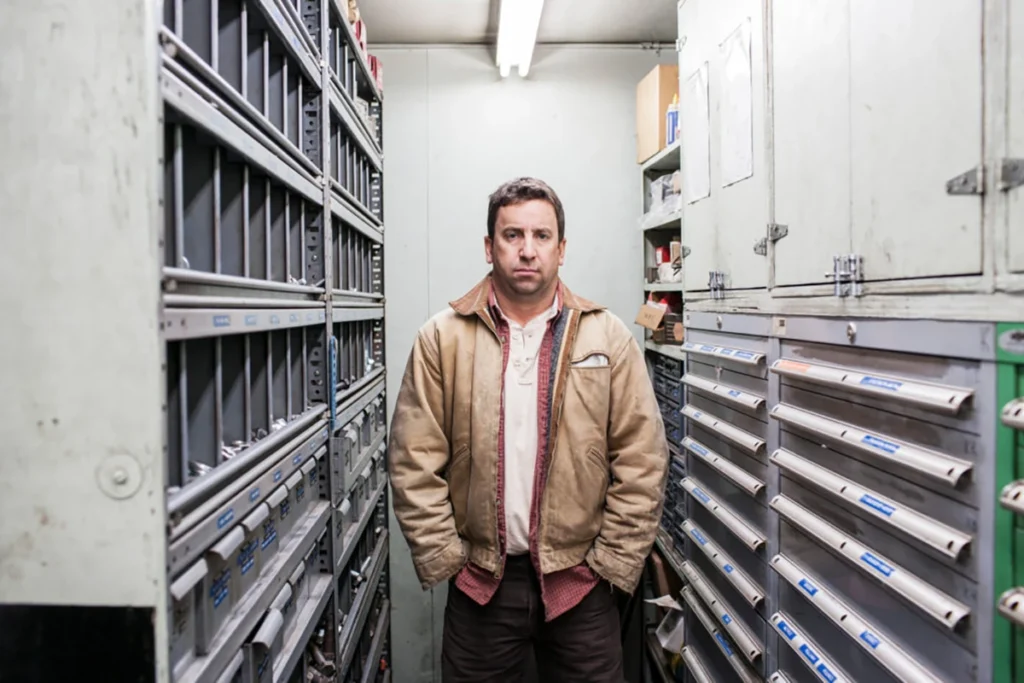
What is the sandwich generation?
The sandwich generation refers to adults who are "sandwiched" between two caregiving responsibilities: raising or supporting their own children while also caring for their aging parents. These individuals often face financial, emotional, and time-management stress as they juggle the needs of both generations.
Key characteristics of the sandwich generation:
- Age Group: Typically individuals in their late 30s to 50s.
- Dual Caregiving: They support aging parents who may need medical, financial, or daily assistance, while also raising or financially supporting children or young adults.
- Financial Strain: Balancing costs like tuition, medical bills, or caregiving services for both children and parents can be challenging.
- Emotional Stress: Managing the needs of two generations often leads to burnout, feelings of guilt, or lack of personal time.
Why it's relevant:
This phenomenon has become increasingly common due to factors like:
- Longer life expectancies requiring extended care for elderly parents.
- Parents having children later in life, leading to overlapping caregiving responsibilities.
- Rising costs of childcare and eldercare.
Understanding the challenges faced by the sandwich generation is important for offering them support, whether through workplace accommodations, community resources, or family care solutions.
Supporting workers to be the most productive
Supporting employees in the sandwich generation can greatly impact workplace productivity.
Casey, a 44-year-old mom of two from Arizona, told us about leaving her 8-year-old daughter standing outside a strip mall after ballet practice last week.
“I dropped my daughter off for ballet and then raced to my dad’s house to help him fix a loose banister. He had been complaining that it was loose, and he was scared he would fall down the stairs, but he wasn’t able to fix it on his own. I had told him I could come to help him on Monday, but I got called into a work meeting. Then Tuesday, my son had an appointment, Wednesday, I had to run a carpool for soccer. On Thursday, I couldn’t go during the day because I had already missed work for the Tuesday appointment.
Finally, my dad called and said the banister was about to fall off the wall. I decided to run over during my daughter’s 45-minute class. Big mistake. I got the banister fixed, but I got stuck in traffic on the way back to the ballet studio. Then, I was ten minutes late to pick-up, and my daughter. Not knowing what to do, she just stood on the curb outside of the studio watching for me. I felt like the worst mom.”
The trickle down effect of sandwich generation burnout
Not to state the obvious, but Casey isn’t “the worst mom.” She's a great mom, but Casey is also a great mom trying to work, take care of her kids, and take care of her parents. Casey is likely approaching what's known as sandwich generation burnout. She’s overwhelmed with the challenging task of caring for aging parents and young children, all while maintaining a professional job and a household. If it sounds stressful, we can assure you it is.
Stories like Casey’s happen every week in every community across the country. What’s more, the impact of caregiving in the sandwich generation has a trickle-down effect. It impacts caregivers, of course. It also affects the kids they are raising, the parents they are caring for, the employers who employ them, and the communities in which they live.
Employees who serve as the “meat” stuck between aging parents and young children feel extra squished right now. Like paninis. Okay, we’ll stop with the terrible sandwich puns. The point is that there is a lot of pressure on people right now and sandwich generation burnout is real.
And that’s a big problem.
Let’s talk about sandwich generation stress

Jonathan, a 51-year-old dad who lives in Oregon, is a prime example on sandwich generation stress can quickly overwhelm any individual. His parents live about ten minutes away from him, and while they are both still healthy, he has been noticing some changes in their health. As a result, they are both struggling to get around like they used to, and both seem to need more and more help getting to appointments and navigating their daily lives.
Jonathan also has split custody of his two kids, which means he cares for them for half the week and every other weekend. He loves having his kids, but he’s noticing that on the weekends that he has them, he has little time to help his parents with all their things. That weekend strain is bleeding into his work week, and he’s finding himself taking PTO at work to make up for it.
“Just last week, my dad called on Tuesday and mentioned that my mom had been coughing, and he was worried she had a fever. I asked him if he had taken her temperature, and he mentioned that he didn’t know where the thermometer was. Then, I asked if he had given her any pain medication, and he said he wasn’t sure how much to give her. I immediately left work, missing an important meeting. Thankfully, my mom just had a little cold, and she was fine, but missing that meeting put me behind all week. I worked late on Wednesday and was late to pick up my kids, and then on Thursday, I was working on a presentation while trying to help my son with his pre-algebra. I’m sure you can imagine how that went. My productivity just spiraled.”
Jonathan’s story and Casey’s above both demonstrate the incredible pressure that’s on the sandwich generation. These are workers at the peak of their careers–often, these employees hold key positions in companies. They lead teams and projects and product launches.
They also have a whole lot of responsibility at home.
Which means they are torn in many different directions.
Productivity falls. People get sick. Employees miss work. Parents miss school events. Older adults live in unsafe homes. Care gaps open.
Stress rises.
According to Pew Research, one in every seven American workers cares for both aging parents and young children. What’s more, this number is rapidly increasing as the over-65 population increases. But there’s more to the story than simply that a vast percentage of the American workforce is in the sandwich generation. The responsibilities have a huge impact on their lives– and the businesses for which they work.
Impact on business
Recently, we read a shocking statistic: An average large employer pays $3.5 million every year in unexpected leave.
Yes, $3.5 million is a lot of money, but we wanted to dig a bit deeper into exactly what it meant.
There are employees with stories like Casey’s and Jonathan’s all over the United States. In addition, almost 75% of our workforce serves as a caregiver in some capacity. Of those, nearly 25% care for both parents and children. This means that stories of missed boardroom meetings, missed deadlines, missed ballet recitals, and missed doctor’s appointments play out in businesses across the country every day.
There’s a growing number of people in the sandwich generation–9.3 million people at last count–which means growing pressure, increased stress, and mounting costs associated with it.
But there’s something else: Employees who double as caregivers are no longer an invisible workforce. In the past, it was easy to assume it was “someone else’s problem” and that the employees in the sandwich generation would figure it out. But, when it comes to key employees–and an efficient workforce–the impacts of caregiving quickly become everyone’s problem.
The stat we mentioned above–that the average large employer spends $3.5 million annually on costs associated with unexpected absenteeism is a big, scary stat. But it doesn’t have to be that way because it’s not an end-all stat.
There is a clear route to reducing costs–by reducing unexpected absenteeism,supporting employees who are also caregivers, by providing solutions to increase productivity, costs go down.
Losses no one wants
When we talked to Jonathan (the dad from the story above) one thing stood out to us: Jonathan was seriously committed to increasing his productivity and effectiveness at work.

Jonathan told us that he (obviously) loves his parents and his kids and is committed to making sure he provides for them and supports them. That’s his role as a caregiver. But he also told us that he loves his job and believes in his company. So he is equally committed to ensuring that his team and his company reach their objectives.
There are always exceptions, but most employees genuinely care about their careers and want to be successful. They want to give their employers everything they have–and they are frustrated and stressed about the impact that caregiving has on their productivity.
Most employers will find that this isn’t an us vs. them problem.
Employers want higher productivity. They want to save money, increase effectiveness and reduce absenteeism. But guess what? Employees want the same things. They want to work on highly productive teams that reach objectives. They want their companies to be profitable and successful, and they want to be part of highly efficient teams that get work done well. And they want to stay at work and finish their jobs without the stress of leaving early or missing meetings.
So what can you do about it?
Yes, the sandwich generation is increasing, and yes, there is a massive impact on work productivity due to it, but no, this doesn’t spell doom and gloom for your workforce.
Quite the opposite.
Because while 80% of caregivers have reported that caregiving impacts their work, a surprising 70% say that productivity has increased when benefits are provided to support caregivers.
So what can you as a business do to support caregivers–specifically those in the sandwich generation? We’re going to start with a few easy ideas:
1. Do a little behind-the-scenes research
We’re guessing that you already know a lot about your employees–after all, you hired them, you’re counting on them, you know them. But did you know that 56% of employees choose not to disclose caregiving responsibilities to their managers? To understand exactly what your company needs, we recommend spending a bit of time doing some behind-the-scenes research. Look into HR records and see if people have to leave early or work late on certain days. Ask people what their biggest struggles are balancing work and life.
Potential ROI: The better you know your workforce, the better you can support them so that they, in turn, can support you. Even an hour or two of investment into learning about your employee’s needs can pay big dividends in morale and productivity.
2. Look for Simple Solutions
Often, there are simple (and free!) ways to alleviate some pressure points. For example, if you notice that one of your employees keeps having to leave early to take a parent to doctor’s appointments, you could create a flexible time policy that allows managers to change schedules. For example, people could work a half-hour extra four days a week and then leave 2 hours early one day a week to allow for appointments during business hours.
Potential ROI: By creating flexible solutions, your employees can be their best when they are at work, and you can eliminate or reduce unexpected absences.
3. Create benefits packages that speak to employee problems
As you work to attract and retain top talent, you’ve probably thought about benefits. And while there are hundreds of types of benefits that employers offer–we’ve heard of everything from kegerators in the break room to free meals to unlimited time off–providing caregivers with benefits to support them can be one of the most impactful ways to increase employee productivity. Caregiver benefits–benefits that lend support to the 73% of employees who pull a double shift as caregivers–give your workforce help where they need it.
Potential ROI: Helping your employee caregivers reduces absenteeism and helps your workforce increase productivity and find a balance between work and caregiving commitments, increasing your bottom line and your team’s productivity.
Is it worth the investment?
Sandwich generation employees are essentially putting in double (and even triple!) shifts, but it is possible to support them while also supporting your company’s objectives.
By investing in support for these key employees, they get support where they need it most–flexible schedules, rides to appointments, errands, homework help for kids, pet care and safety checks on aging parents.
The ROI is potentially huge–reduced absenteeism and increased productivity, not to mention retaining a workforce full of happy, supported employees working to meet your shared objectives.
For more on how companion care services can help your members and your organization, download Papa’s Guide to Companion Care.



